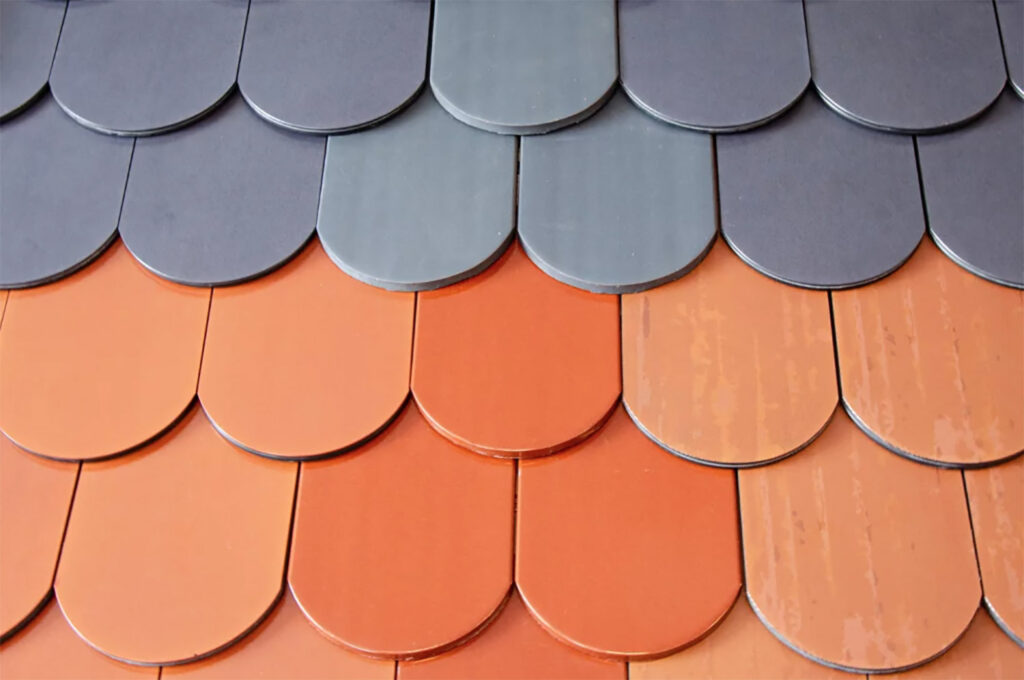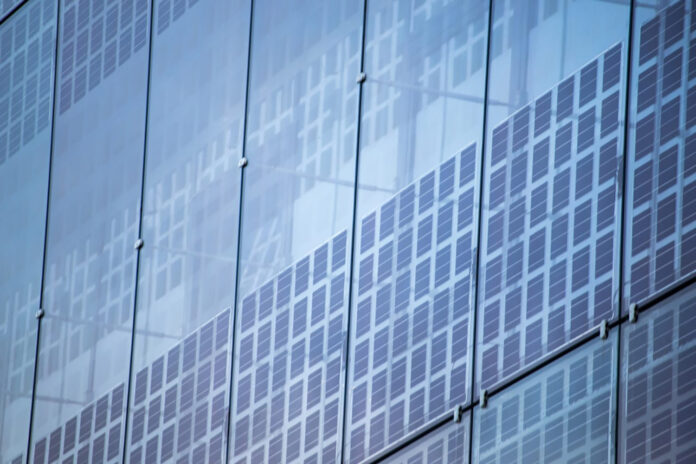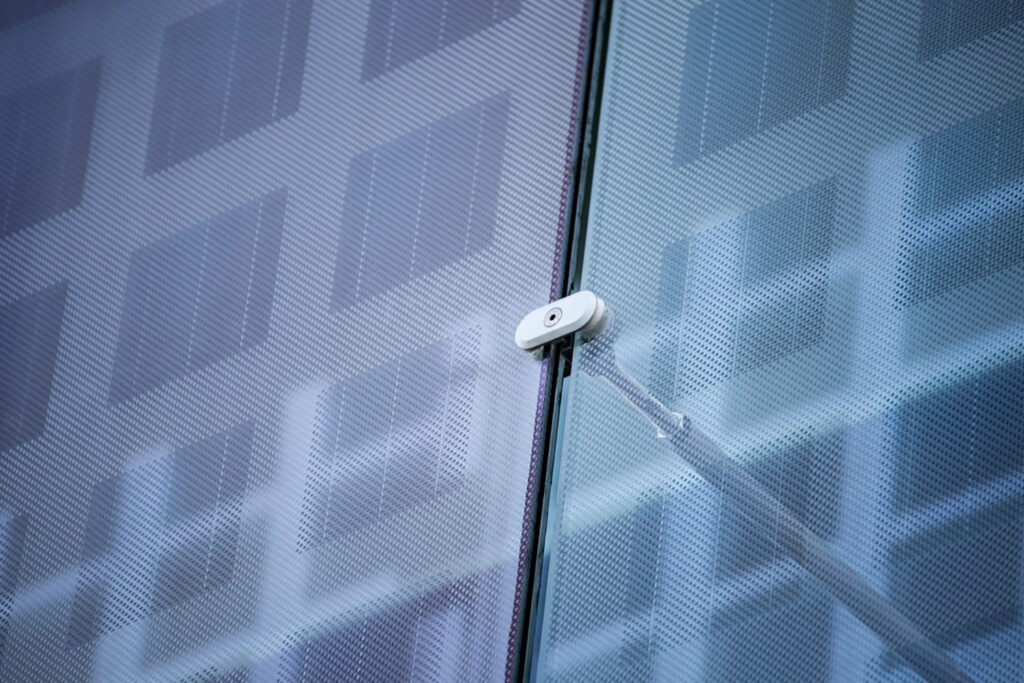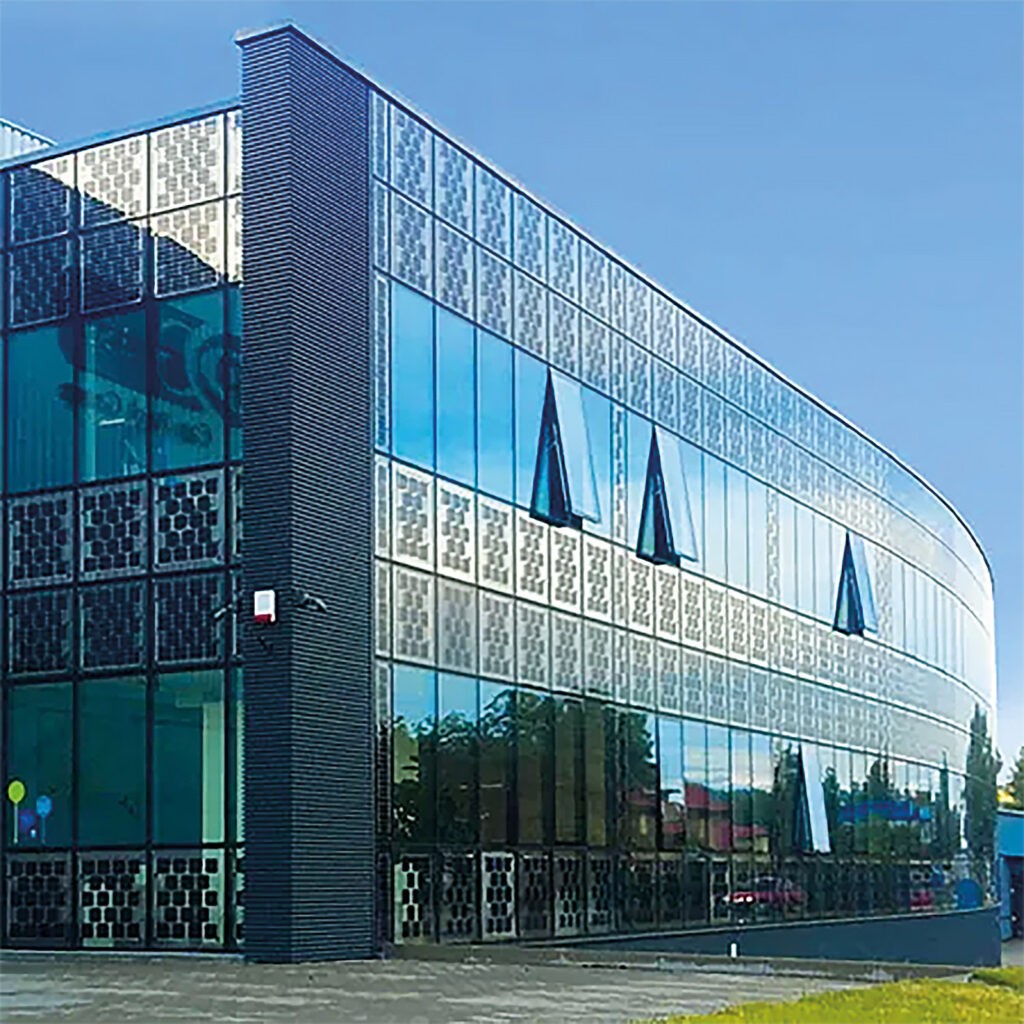The evolution of BIPV technology has been driven by the global push towards sustainable and renewable energy solutions. Much of the research and development into energy efficiency and renewable energy was sparked by the oil crisis of the 1970s.
Over time, BIPV systems have evolved to consider not only energy generation but also aesthetic aspects, utility related to creating thermal and visual environments, and urban planning considerations. This multidisciplinary approach responds to the basic tasks faced by architects. At Facade Today, we want to explore this dynamic topic, offering insights that place both energy and technology at the heart of architectural innovation and design.
Solar Skins
How BIPV Turns Walls Into Solar Generators
The growing BIPV market has marked a general need for BIPV facade solutions. To meet this demand, the industry has developed computational tools to find customized and optimized facade solutions. These tools allow for a hybrid approach combining form finding, shape optimizations, simulations, and fabrication optimization. This digital approach enables a seamless process from design to detail planning, allowing aesthetic design optimization to create shapes that meet client wishes within the design constraints of BIPV while optimizing energetic yields in free-form facade arrangements.
Recent advancements have focused on creating an automated workflow that increases the possibilities of BIPV architectural design while optimizing energy yields and installation costs. This provides more opportunities throughout the design process, from feasibility study to implementation. Additionally, innovative concepts have been developed to enable better performance and efficiency in conditions of partial shading, addressing technical challenges posed by flexible BIPV layouts. New technologies for glass tinting have also been explored, addressing the aesthetic limitations of current BIPV systems and ensuring that BIPV materials are almost indistinguishable from other building materials.
As BIPV technology continues to evolve, it is poised to play an increasingly significant role in shaping energy-efficient, visually appealing buildings while contributing to a cleaner planet.
From Glass to Powerhouse
The Evolution of BIPV Facades
Photovoltaic Facade Panels: PhotonWall Technology
PhotonWall, developed by ML System, represents a groundbreaking innovation in photovoltaic facade panels. This technology seamlessly integrates solar energy generation into building designs, offering architects and contractors the ability to create aesthetically pleasing and highly functional facades. PhotonWall panels are designed not only to produce clean, emission-free electricity but also to enhance the architectural appeal of buildings through their modern and pro-environmental forms.
These panels are crafted from high-strength laminated glass with integrated photovoltaic systems, ensuring durability and safety while maintaining energy efficiency. The versatility of PhotonWall allows its application in both new constructions and retrofitting projects, making it a key player in sustainable building practices. Additionally, the panels come with a complete mounting system that supports both vertical and horizontal installations, minimizing material use and simplifying the construction process. This innovation underscores the dual role of facade cladding as both a protective architectural element and an energy-generating system.
High-Strength Laminated Glass with Integrated Photovoltaic Systems
The integration of high-strength laminated glass into BIPV systems has significantly advanced facade technology. These glass panels utilize specialized interlayers such as Saflex Structural PVB, which enhances the rigidity and adhesion of the glass, enabling it to withstand higher loads and maintain structural integrity even after breakage. This makes them ideal for applications requiring durability and safety, such as large-scale facades or buildings exposed to extreme weather conditions.
Moreover, laminated glass with photovoltaic systems can incorporate additional features like solar control films that reduce heat gain while allowing visible light transmission. This combination improves thermal performance without compromising aesthetics or natural lighting. The use of advanced interlayers also allows for thinner glass designs, reducing overall weight and cost while maintaining strength and performance. These innovations make high-strength laminated glass a cornerstone of modern BIPV systems.
Customization Options: Size, Shape, Color, and Transparency
One of the most exciting aspects of modern BIPV materials is their customizability. Manufacturers now offer photovoltaic panels in a wide range of sizes, shapes, colors, and transparency levels to meet diverse architectural needs. For example, PhotonWall panels are available in various finishes like marble, wood, concrete, and even rust effects, allowing them to blend seamlessly into different design aesthetics.
Transparency levels can also be adjusted to create semi-transparent or fully transparent panels suitable for windows or skylights. This flexibility enables architects to design facades that balance energy generation with natural lighting requirements. Additionally, custom shapes and dimensions allow for innovative designs that were previously unattainable with traditional solar panels. These advancements ensure that BIPV systems can harmonize with any architectural vision while maintaining their functionality.

Full and Cut Solar Cell Variations
The development of full-cell and half-cut solar cell technologies has further enhanced the efficiency and adaptability of BIPV systems. Full-cell modules are suitable for applications where maximum energy generation is required over large areas. In contrast, half-cut cells divide each cell into two halves, reducing internal resistance and improving performance under partial shading conditions.
Half-cut modules also exhibit greater durability due to reduced thermal stress on individual cells. This makes them ideal for facades exposed to variable lighting conditions or partial obstructions.
Additionally, these modules can be combined with bifacial technology to capture sunlight from both sides of the panel, maximizing energy yield even in diffuse light environments.
Beyond Solar Panels
Energy Savings and Design Freedom
As we’ve explored, BIPV technology has transformed from a purely functional element to a multifaceted solution that addresses energy generation, aesthetics, and environmental control simultaneously. The development of advanced systems like PhotonWall exemplifies how BIPV can seamlessly blend into architectural designs while providing clean, efficient energy.
The customization options now available in BIPV systems, from varied sizes and shapes to adjustable transparency and aesthetic finishes, provide architects and engineers with more options to optimize energy production based on site-specific conditions. This adaptability, coupled with innovations in high-strength laminated glass and solar cell technology, has expanded the potential applications of BIPV in both new constructions and retrofitting projects.
As we look to the future, the continued advancement of BIPV technology promises to play a crucial role in creating energy-efficient, visually striking buildings that contribute significantly to our sustainable urban landscapes. By turning building envelopes into active energy generators, BIPV is not just changing the face of architecture – it’s reshaping our approach to urban energy systems and paving the way for a more sustainable, resilient built environment.
As the Editor of FacadeToday.com, I merge my passion for Design, Architecture and Technologies with three decade of experience collaborating with entrepreneurs across many industries. My career has centered on fostering innovation, scaling business opportunities, and bridging gaps between technical experts, business developers, and creative visionaries. I thrive at the intersection of sustainable solutions, material advancements, and smart technologies, curating insights on themes like energy-efficient facades, smart tech, and advanced manufacturing. With a commitment to lifelong learning, I aim to empower architects and facade engineers by translating innovations into actionable knowledge, driving the industry forward through purposeful connectivity and cutting-edge practices.





